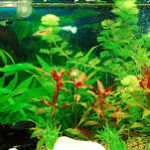Understanding the Needs of Fine, Damaged Hair
The Struggle of Fine and Damaged Hair
Fine hair presents a unique set of challenges, especially when it is also damaged. Unlike thick or coarse hair, fine hair strands are delicate and prone to breakage. Damage from heat styling, chemical treatments, or environmental factors can make fine hair look limp, frizzy, and lifeless. Many conditioners designed for damaged hair are too heavy, weighing fine hair down and making it appear greasy. Finding the right lightweight conditioner that nourishes without overwhelming the hair is crucial.
Why Lightweight Conditioners Are Essential
Heavy conditioners can coat fine hair strands excessively, leading to buildup and loss of volume. Lightweight conditioners, on the other hand, provide moisture and repair without the risk of weighing hair down. These formulations often contain proteins, amino acids, and hydrating ingredients that penetrate the hair shaft without leaving residue. For fine hair that is also damaged, the right conditioner should strengthen, add shine, and improve manageability while maintaining natural bounce.
Key Ingredients to Look For
Not all conditioners are created equal, especially for fine, damaged hair. Key ingredients to seek include:
- Hydrolyzed proteins – These small proteins repair damage by filling in gaps in the hair cuticle.
- Panthenol (Vitamin B5) – A lightweight moisturizer that adds volume and elasticity.
- Amino acids – Help rebuild hair structure and prevent further breakage.
- Natural oils (like argan or jojoba) – Provide hydration without heaviness.
Avoid conditioners with silicones like dimethicone, which can cause buildup over time. Instead, opt for water-soluble silicones or silicone-free formulas.
How to Choose the Best Lightweight Conditioner
Selecting the right conditioner involves considering hair porosity, texture, and specific damage concerns. Low-porosity fine hair benefits from lightweight, liquid-based conditioners, while high-porosity hair may need slightly richer (but still non-greasy) formulations. Reading labels and understanding ingredient lists can help in making an informed choice.
Top Lightweight Conditioners for Fine, Damaged Hair
What Makes a Conditioner Stand Out?
With countless products on the market, identifying the best lightweight conditioners requires careful evaluation. The ideal product should balance moisture and repair while maintaining volume. It should also be free from harsh sulfates, heavy waxes, and drying alcohols. Below are some of the top-performing conditioners that meet these criteria.
1. Olaplex No. 5 Bond Maintenance Conditioner
Olaplex is renowned for its bond-repairing technology, and the No. 5 conditioner is no exception. Designed to strengthen damaged hair, it works by re-linking broken disulfide bonds in the hair structure. Despite its reparative properties, it remains lightweight, making it suitable for fine hair. Users report improved softness and reduced breakage without heaviness.
2. Briogeo Don’t Despair, Repair! Strength + Moisture Conditioner
This conditioner is packed with biotin, panthenol, and rosehip oil, offering a perfect balance of strength and hydration. It is free from silicones and sulfates, ensuring no buildup. Fine-haired individuals appreciate how it detangles and smooths without compromising volume.
3. Kérastase Résistance Extentioniste Conditioner
Formulated with ceramides and proteins, this conditioner helps fortify weak, damaged hair. It is slightly richer than the others but still lightweight enough for fine hair when used sparingly. It promotes elasticity and reduces split ends, making it a favorite for those with heat-damaged hair.
4. Living Proof Perfect Hair Day Conditioner
This silicone-free conditioner is designed to provide moisture without weighing hair down. It contains patented Healthy Hair Molecule (OFPMA) to repel dirt and oil, keeping hair fresh longer. Fine-haired users love how it enhances shine and manageability.
5. Aveda Damage Remedy Daily Hair Repair
Aveda’s plant-based formula includes quinoa protein and ceramides to repair damage while maintaining a light texture. It is particularly beneficial for color-treated fine hair, as it prevents further damage and fading.
In the following section, we will discuss how to properly use lightweight conditioners to maximize their benefits for fine, damaged hair.
How to Use Lightweight Conditioners Effectively
The Right Application Technique
Even the best conditioner can underperform if applied incorrectly. For fine, damaged hair, the key is to focus on the mid-lengths and ends rather than the roots. Applying conditioner directly to the scalp can lead to excess oiliness and flatness. A pea-sized amount is usually sufficient—fine hair doesn’t need heavy product application.
Leave-In vs. Rinse-Out Conditioners
Rinse-out conditioners are ideal for daily use, providing temporary moisture and detangling benefits. Leave-in conditioners, however, offer prolonged hydration and protection. For fine hair, a lightweight leave-in spray or cream can be beneficial, especially for those with heat-damaged or chemically treated hair.
Frequency of Use
Over-conditioning can make fine hair limp, so moderation is key. Those with mild damage may only need conditioner 2-3 times a week, while severely damaged hair might require daily conditioning. Adjust usage based on how the hair responds—greasiness means cut back, while dryness means increase slightly.
Pairing with the Right Shampoo
A lightweight conditioner works best when paired with a gentle, sulfate-free shampoo. Clarifying shampoos should be used sparingly (once a week) to prevent stripping natural oils. Balancing shampoo and conditioner ensures optimal hair health without buildup.
In the final section, we will conclude with additional tips for maintaining fine, damaged hair and a recap of the best product recommendations.
Conclusion – Maintaining Healthy Fine, Damaged Hair
Additional Care Tips
Beyond using the right conditioner, other practices can help restore fine, damaged hair:
- Limit heat styling – Air-dry when possible and use heat protectants.
- Trim regularly – Prevents split ends from traveling up the hair shaft.
- Protect from UV damage – Wear hats or use UV-protectant hair products.
- Avoid tight hairstyles – Reduces tension and breakage.
Final Product Recommendations
For those seeking the best lightweight conditioners for fine, damaged hair, the top picks are:
- Olaplex No. 5 – Best for bond repair.
- Briogeo Don’t Despair, Repair! – Ideal for strength and moisture balance.
- Kérastase Résistance Extentioniste – Great for heat-damaged hair.
- Living Proof Perfect Hair Day – Perfect for volume and shine.
- Aveda Damage Remedy – Best plant-based option.
Final Thoughts
Fine, damaged hair requires a careful balance of hydration and strength without heaviness. By choosing the right lightweight conditioner and following proper hair care techniques, it is possible to restore health, volume, and shine. Experimenting with different products and routines will help determine what works best for individual hair needs. With consistent care, fine, damaged hair can regain its vitality and look its best.










